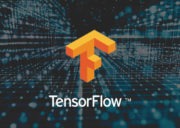With the pandemic COVID-19, we’ve seen developers, hackers, AI research, data scientists, and open source enthusiasts putting their hand up to help. They are doing this through hackathons, research and hardware, with a series of government, academic and private institutions providing access to the world’s most powerful high-performance computing resources in support of COVID-19 research. IBM, government bodies and universities have collectively formed COVID-19 High-Performance Computing Consortium, which brings an unprecedented amount of computing power. Data science and machine learning play a critical role in making medical research possible that would otherwise take decades, leading to the development of life-saving medication and improved treatment outcomes.
AI research to fight Leukemia
An interesting example is The Peter Moss Acute Myeloid / Lymphoblastic Leukemia AI Research Project is an open source project being coordinated by a group of volunteers with experience in computer vision / natural language processing, Leukemia research, Biochemistry, Molecular Biophysics, Immunology and Bioinformation. The purpose of the project is to share public information related to AML/ALL, as well as open source projects aimed at early dectection with convolutional neural networks, using natural language understanding for AML/ALL chatbots, and R&D for discovering potential candidates for drugs for AML/ALL. This project is in memory of Peter Edward Moss who lost his battle with Acute Myeloid Leukemia in August 2019.
Estela Cabezas is an Intel Software Innovator who recently received her BSc in Biotechnology. After some years of experience in laboratories, Estela realized how important it is to have a good IT background to follow up with the latest research updates in the biological sector. She was introduced to the project by project founder AdamAdam Milton-Barker in early 2019 to get assistance from the team for her thesis. Since then Estela has volunteered her time representing the project, and coming up to her second time representing the project as an Intel Software Innovator. She shared the progress of the project at Codemotion Madrid 2019.
She shared; “I’ve just graduated in biotechnology, which means that my background in programming is a bit limited, as still getting into this new world. I started my degree in 2014 and I was working in many labs, I worked in generics in chemistry. Basically I was treating different kinds of cellular samples. In 2018, I realised the huge amount of information we were getting from labs. So I needed to know how to treat them instead of doing it by hand, which takes ages. I wanted to do it in a computational way.
in 2018 I learnt about the carcinoma project. I was interested because in 2018, I was getting my bachelor’s thesis and I wanted to do something different. Finally, this year I turned in my case study onto Peter Moss.
What is Acute Myeloid Leukemia?
Acute Myeloid Leukemia is a rare and aggressive form of Leukemia where mutated white blood cells destroy health red cells in masses. Early detection is very hard, if not impossible. In Adam’s grandfather’s case, he was given the all clear in a standard blood test, one month before being diagnosed terminally ill.
How did the AI research project start?
The Peter Moss Acute Myeloid /Lymphoblastic Leukemia AI Research Project started with Peter Edward Moss having a blood test. and the test turned out clear. After he collapsed. Doctors didn’t know what was going on and after additional tests, he was diagnosed with acute myeloid leukaemia.
Peter’s grandson, Adam, found it hard to find open computer vision datasets for Acute Myeloid Leukemia. In addition, Peter’s family found very little useful information available online, or from their doctors, to understand how to live with AML.
A Facebook post lead to critical datasets
A Facebook post by one of Peter’s grandsons, Adam Milton-Barker, in Artificial Intelligence & Deep Learning (AIDL) Group on Facebook brought the project to the attention of Ho Leung Ng, Associate Professor of Biochemistry & Molecular Biophysics at Kansas State University. As a leukemia researcher, Ho was able to share information of datasets, research papers and access to people who are researching/volunteering their time/experience to early detection and drug discovery for Acute Myeloid and Lymphoblastic Leukemia.
Adam had previously created a model to diagnose ductal carcinoma by CNN, and after that, he decided he wanted to get more involved into leukaemia and was trying to adapt the previous Invasive Fuctal Carcinoma CNN to develop an AI detection method for Acute Lymphoblastic Leukemia. The project focused on ALL as there were no Acute Myeloid Leukemia data sets available.
The AML / ALL Detection System is part of the AML / ALL AI Research Project, and uses Intel technologies to provide a locally hosted management system for data management and inference. In addition to detection / early detection, the project incorporates facial recognition, natural linguistics, speech recognition and speech synthesis.
The Acute Lymphoblastic Leukemia Image Database for Image Processing dataset is used for this project. The dataset was created by Fabio Scotti, Associate Professor Dipartimento di Informatica, Università degli Studi di Milano.
The team formed Peter Moss Leukemia AI Research in January 2020 in anticipation of registering as a non-profit. We are actively working on the documentation required to register as a non-profit Association here in Sabadell, Barcelona.
Additional Codemotion articles on AI research, data science, machine learning, and healthcare:
Epidemic Intelligence, part 1: data, models and machine learning in the age of Coronavirus: With the help of graphs and a bit of Python code, in this article we put forth some reflections about the risks of developers and computer scientists dealing with viruses and the available epidemic data. Which sounds like a virologist dealing with the study of a cryptolocker.
Epidemic Intelligence, part 2: data, models and machine learning in the age of Coronavirus In this article, we show how to use non-parametric models, and particularly neural networks, to predict the numbers of coronavirus epidemic.
Using Machine Learning to diagnose COVID-19:The SARS-CoV-2 coronavirus has totally dominated our lives over recent months. Here, we look at efforts to create machine learning models for diagnosing people with COVID-19.
Generative AI: creating objects with machine learning: Generative AI consists in algorithms for generating artificial (but realistic) images. In this article, we’ll learn more about it and its applications.
Scaling is Caring: scalable pipelines for machine learning in healthcare: Healthcare applications are usually based on very high amounts of data. In this article, we will see some solutions to deal with scalability using Python.




